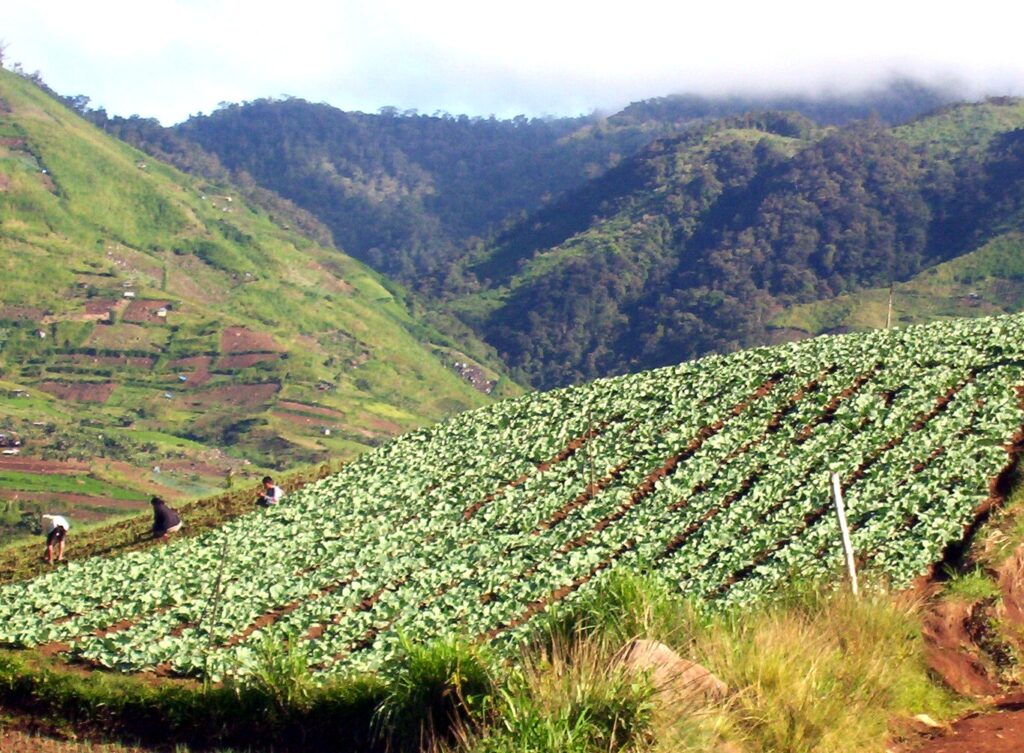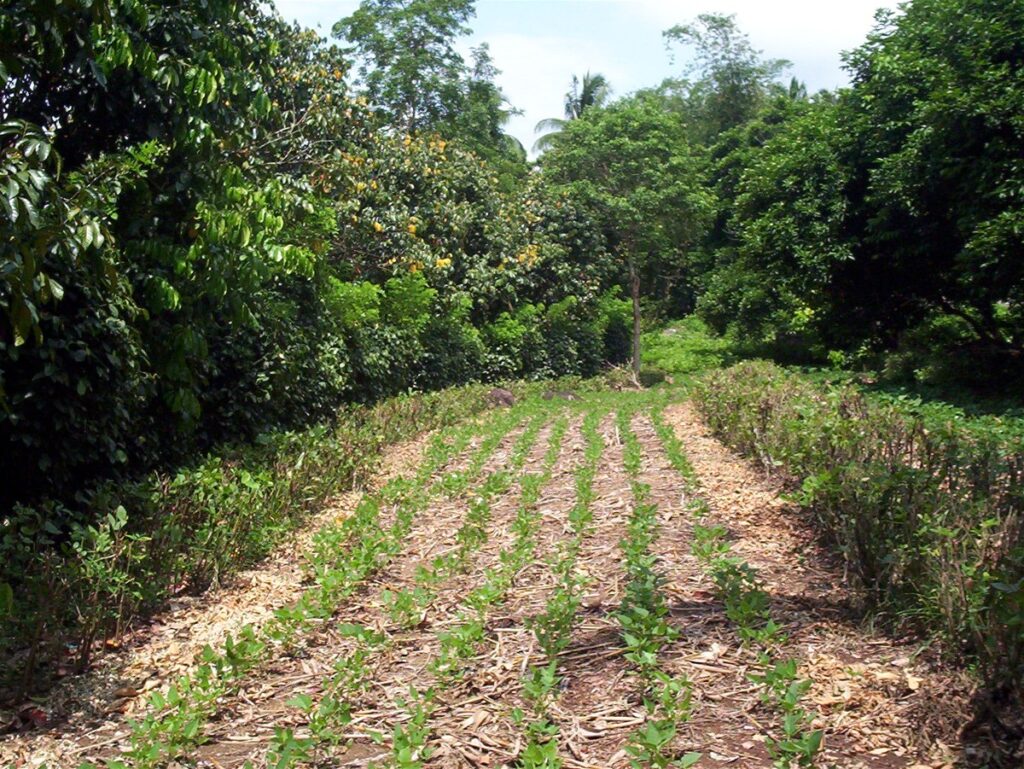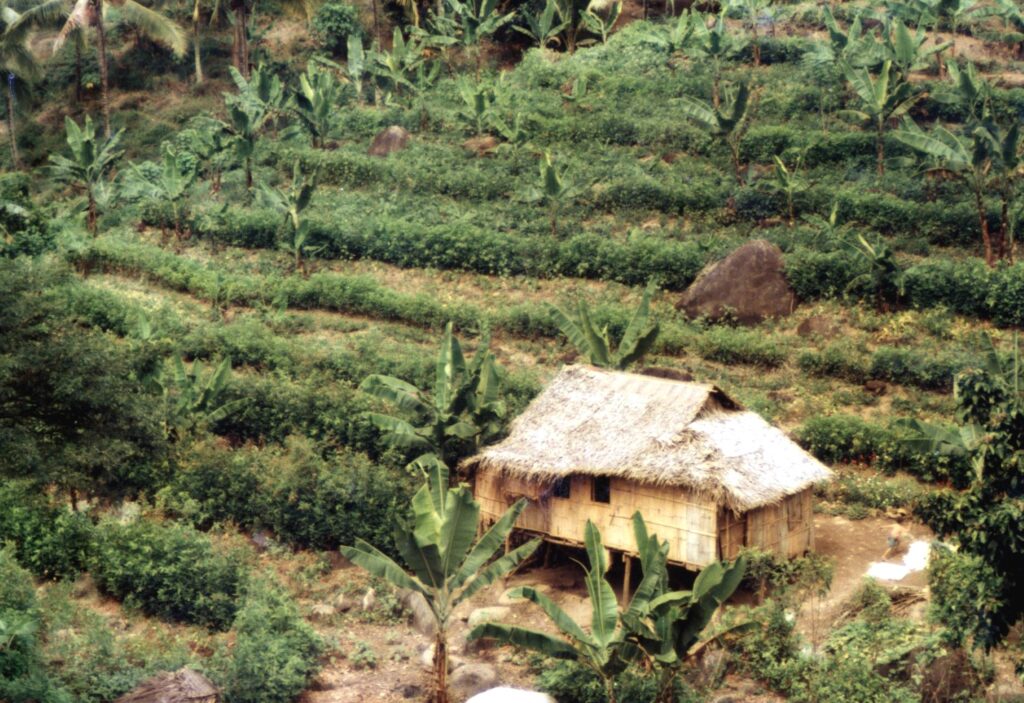Text and Photos by Henrylito D. Tacio
Upland farmers, often regarded as the “poorest of the poor,” can substantially defy the onslaught of El Niño by adopting a technology promoted by a non-government organization based in the southern part of the Philippines.
The Sloping Agricultural Land Technology (SALT), developed by the Mindanao Baptist Rural Life Center (MBRLC) in Kinuskusan, Bansalan, Davao del Sur, has been observed to produce crops despite the long drought.
The cost and return analysis of the SALT demonstration plot showed that during the El Niño in 1983, the system still managed to give a monthly net income of P436.90. The previous figure, in 1982, was P597.85 per month. Reported studies showed that most upland farmers in the country during that time get a measly income of only P300 per month.
In 1990, when another drought hit Mindanao, the SALT system had a monthly net income of P1,277.31. This was only 54.34 lower than the previously reported monthly net income of P1,331.74 in 1989.
SALT introduces a scheme whereby denuded uplands can be made productive for farmers using locally available materials. Planting leguminous trees and shrubs closely as belts, this technology conserves soil and water, making the uplands more favorable for the sustained production of many annual and perennial agricultural crops.
“I think the reason why our SALT farm still yields crops was due to the hedgerows planted along the contours of the farm,” said Roy C. Alimoane, the center’s director.
Among those that are used for hedgerows are locally-grown “ipil-ipil” (Leucaena leucocephala) and “kakawate” (Gliricidia sepium). Introduced species like Flemingia macrophylla, Indigofera anil, and Desmodium rensonii can also be used. “They all fix nitrogen from the air,” Alimoane says. “As such, they help fertilize the soil with the droppings of their leaves.”
The hedgerows are cut down when they are one meter tall or when they begin to shade crops. “The cut branches with leaves are piled at the base of the crops to serve as fertilizer,” Alimoane says. “They also serve as mulching materials so that the moisture can be retained in the soil.”
That’s partly one of the main secrets of the SALT scheme. A study, which started in 1991 and ended in 1994, was done at the center between traditional farming and SALT farming. It was aimed in measuring the moisture availability of soil at a six-inch depth.


“Our study showed that each of our SALT components tends to have more available moisture than the non-SALT farming system at the six-inch depth,” Alimoane claims, adding that the trees within a cropping system do not necessarily compete for moisture. “In fact, they may benefit one another in the long run,” he points out.
In the SALT system, various crops are planted. “Doing so means a farmer can have a harvest every now and then,” Alimoane says. “Planting several crops also minimize pest infestation and help control diseases among crops.”
Permanent crops — like cacao, coffee, banana, and fruit trees — can be planted at the same time when NFT/S species are planted. Permanent crops are planted on every third strip. On the first and second strips, short-term and medium-term crops are grown.
“The crops grown in first and second strips become the source of income for the farmers and in some instances foods for the family. It may take some time for the permanent crops to bear fruits. “Short crops should be planted away from tall ones to avoid shading,” reminds Alimoane.
Crop rotation is also practiced in the SALT farm. “A good way of crop rotation is to plant grains (corn, upland rice, and sorghum), tubers (sweet potato, cassava, and “gabi”), and other crops (vegetables, legumes, and peas) on strips where legumes were previously planted and vice versa,” Alimoane suggests. “This practice will help maintain the fertility and good condition of the soil.”
The SALT scheme is also a good way of controlling soil erosion. Generally, after a long drought, a farm is barren and without cover. So, when a big rain comes, all the topsoil is washed out.
In a study done by MBRLC, it was found that SALT is very effective in controlling soil erosion because of the thickly planted NFT/S species. “Where the non-SALT system yields a total of almost 1,200 tons of erosion over the six year study, the SALT farms only yields a total of 20 tons,” Alimoane says.
Computing the data, the study showed that the annual rate of soil loss for the SALT system is 3.4 tons per hectare per year. “This is much less than the non-SALT system, which is 194.3 tons per hectare per year,” says Alimoane.
Both the Department of Science and Technology (DOST) and the Department of Agriculture (DA) are recommending the adoption of SALT as a way to cushion the impacts of the looming El Niño, which will hit the country in the middle of the year.
“SALT is an agroforestry technology which combines agricultural and forestry crops in a single land, at a percentage ratio of 75:25,” points out the book, El Niño Southern Oscillation: Mitigating Measures, published jointly by DOST and DA. “This technology can help reduce soil erosion four times, increase the yield crop five times, and improve income six times.”
An El Niño strikes every three to seven years, when trade winds in the tropical parts of the Pacific Ocean weaken or reverse their usual route. The winds then blow surface water warmed by the tropical sun to the eastern Pacific Ocean and the equatorial west coast of South America.
Rain follows the current, and eastern South America may then experience flooding, while Australia, southern Africa and most of Asia may have drought. In the Philippines, a long dry spell is likely to happen.



